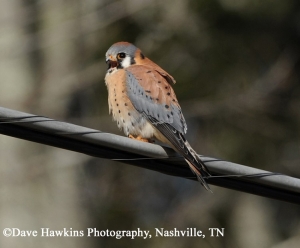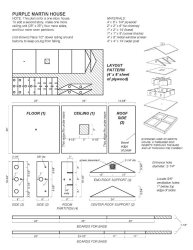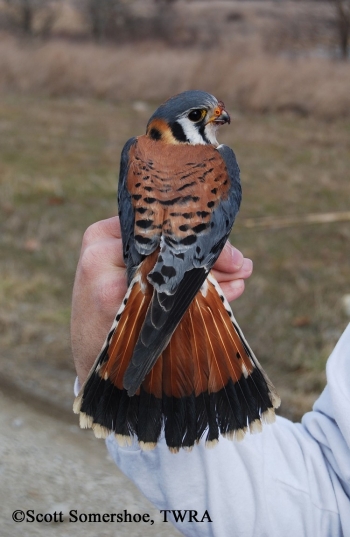American Kestrel Nest Box
Nest Box Design for American Kestrel
There is one typical box design for American Kestrels, which also happens to be a design for Eastern Screech Owl.
Download an American Kestrel Nest Box plan
* Housing for American Kestrels should be built to last and easy to maintain
* Use natural, uncoated wood such as cedar or redwood which are more durable than pine or exterior plywood. Use at least ¾ inch boards.
* The exterior of the house and the pole benefit from exterior treatments to reduce the effects of weather
* Paint the exterior with white or other bright colors that reflect sunlight and prevent hot interior temperatures
Box Placement
Your Kestrel box should be in place by late winter.
Place the box on a pole, tree or outbuilding with the cavity entrance 10 to 30 feet above the ground and facing southeast to avoid direct winds.
Ideally, the box should be surrounded by at least an acre of open field and within 20 yards of a tree with dead limbs, a utility pole, or other structure to serve as a hunting perch.
If placing more than one box, place the boxes at least one half mile apart. To reduce competition for nest cavities from squirrels, it is advised to place the box 50 yards from a forest edge.
In agricultural areas, place the box a substantial distance from fields treated with pesticides, since insects are the primary food source for kestrels.
Using a predator guard is very important in establishing a successful nesting box.
Box Management
Monitoring all boxes you plan to erect is very important to the success of your targeted nesting birds. We do not recommend installing a nest box if you do not plan to monitor it.
Proper placement of the box will help to reduce the problem of cavity nesting competitors. However, even the best placed box can be attractive to European Starlings.
It is important to monitor the box and remove European Starlings' nests and eggs. Erect only as many boxes as you can properly monitor and maintain.
Territorial behavior begins 3 to 4 weeks prior to laying eggs. Territorial behavior includes frequent entering and exiting of the nest box by both male and female.
The first visit to the nest box should begin before this time. Begin observing the area and box in mid-March through late June from a distance to determine if nesting activity is taking place.
Boxes should be visited no more than 4 to 5 times each year.
Visit 1: The box should be cleaned out and repaired, if necessary. Add 2 to 3 inches of wood chips or shavings to the box floor.
Visit 2: 10 to 14 days after the male is seen bringing food to the nest carefully open the box to check and record the number of eggs.
Visit 3: By adding 45 to 50 days to the estimated date of the last egg laid, you can calculate the best time to visit the third time, which should be about 2 weeks prior to the fledging date. Use extreme caution when opening the box to prevent nestlings from prematurely fledging.
Visit 4: This should occur after you have observed that the nestlings have fledged. Box should be cleaned and remain outside to provide winter cover.


